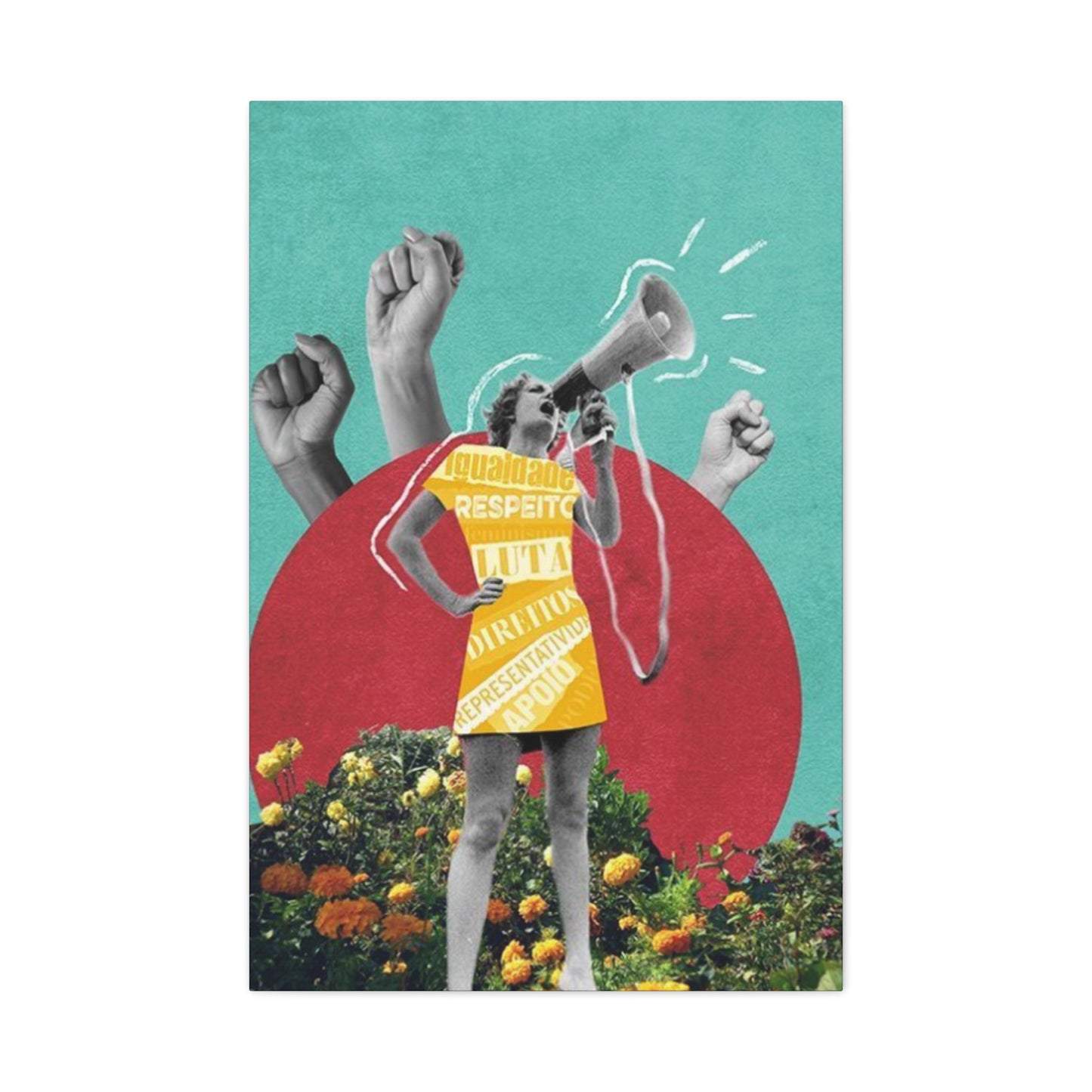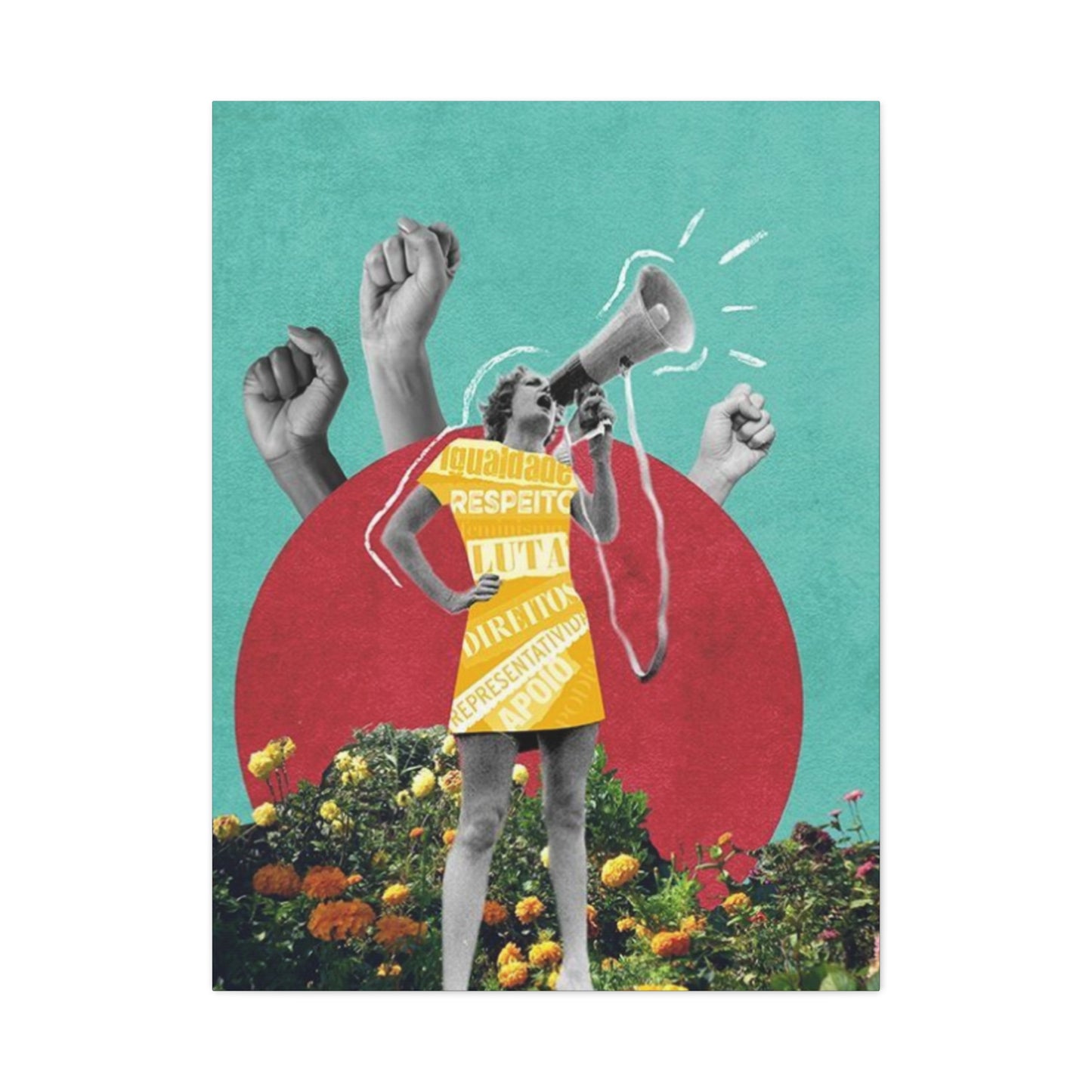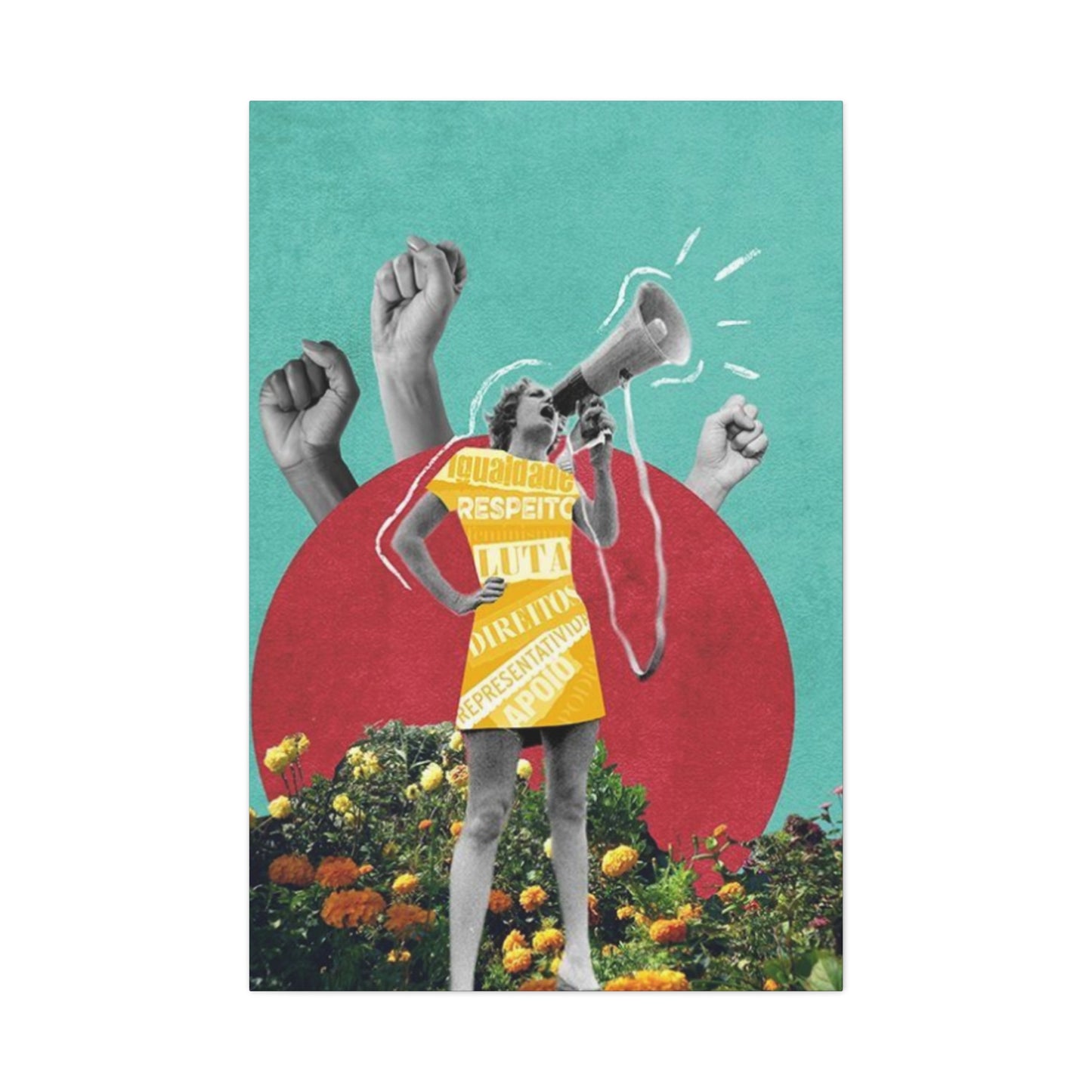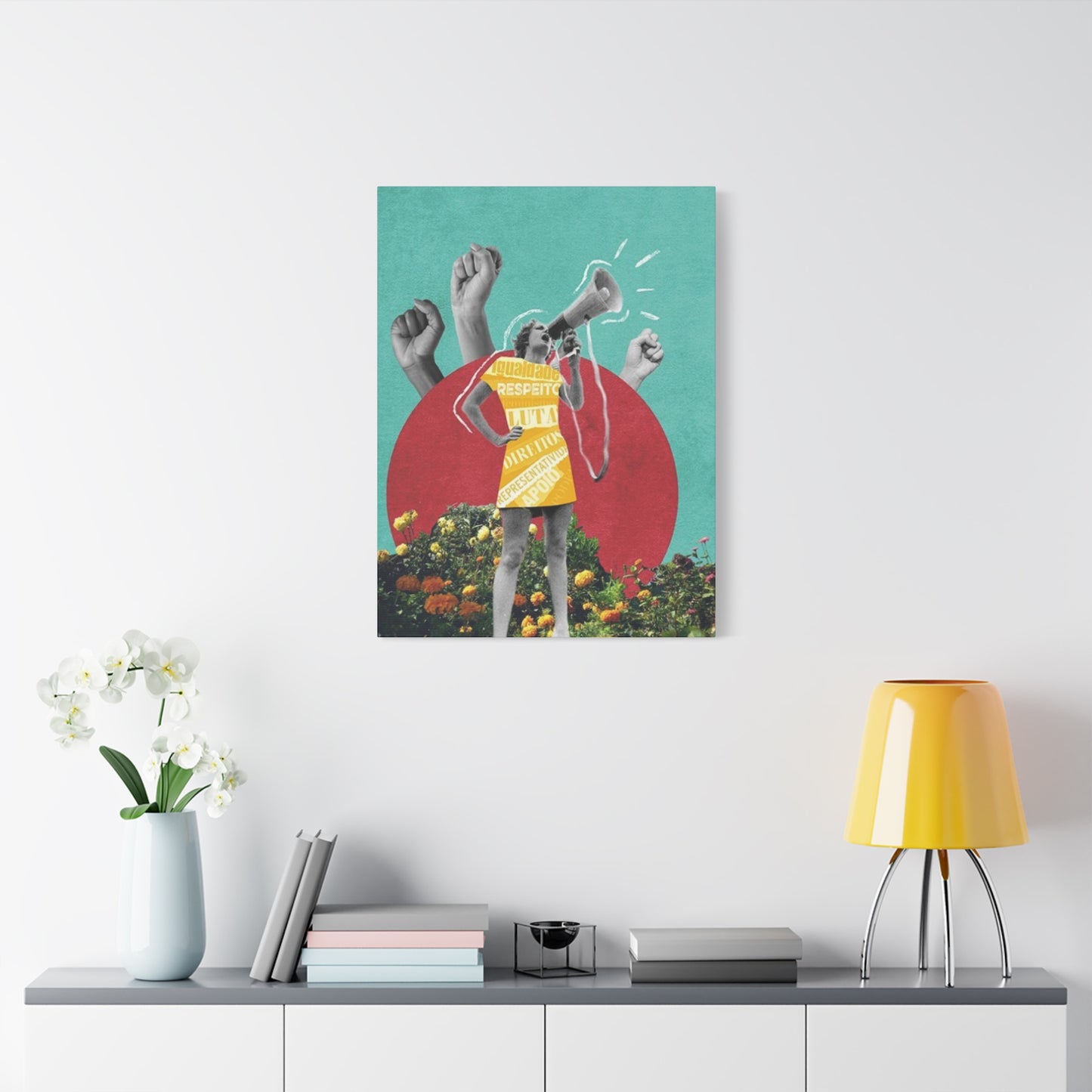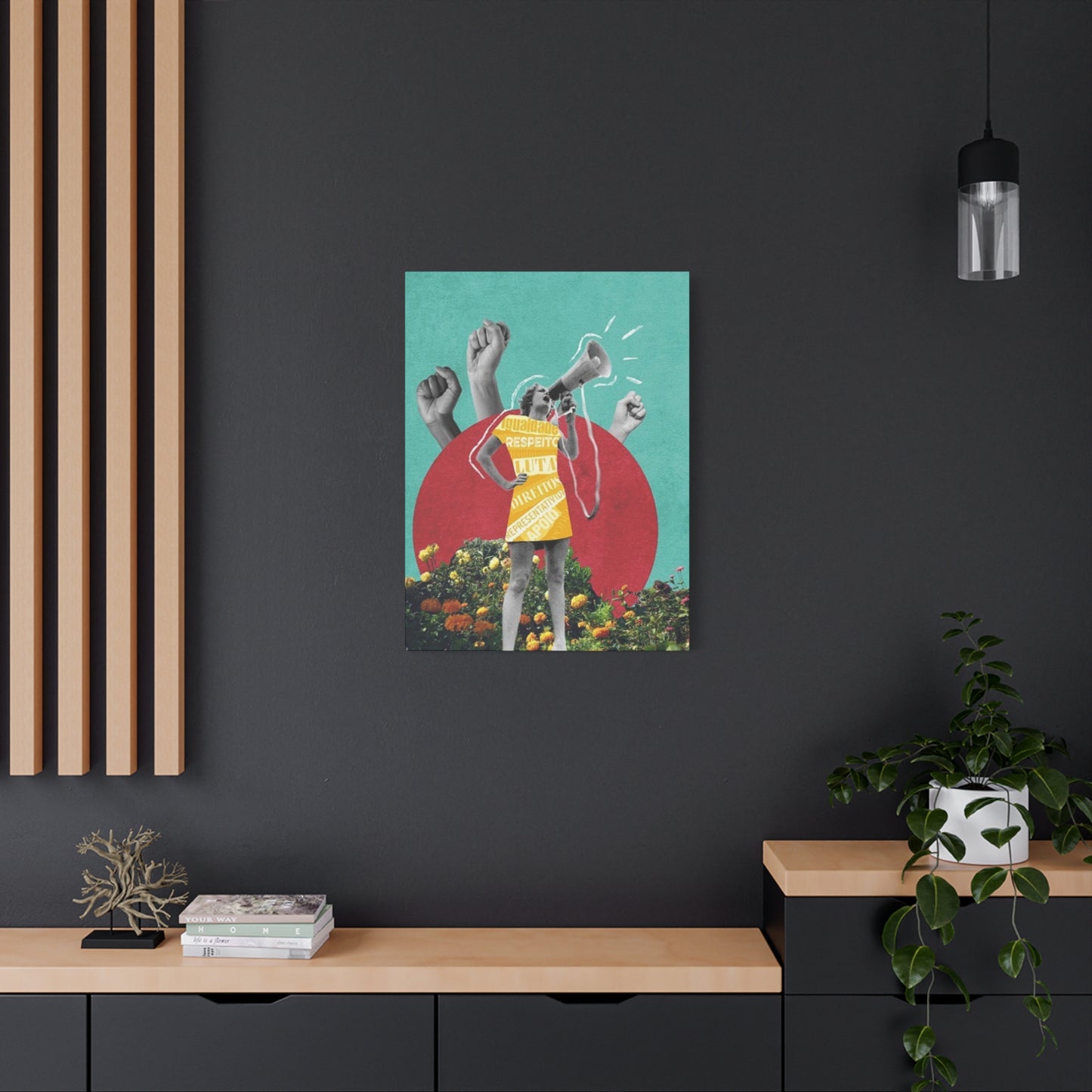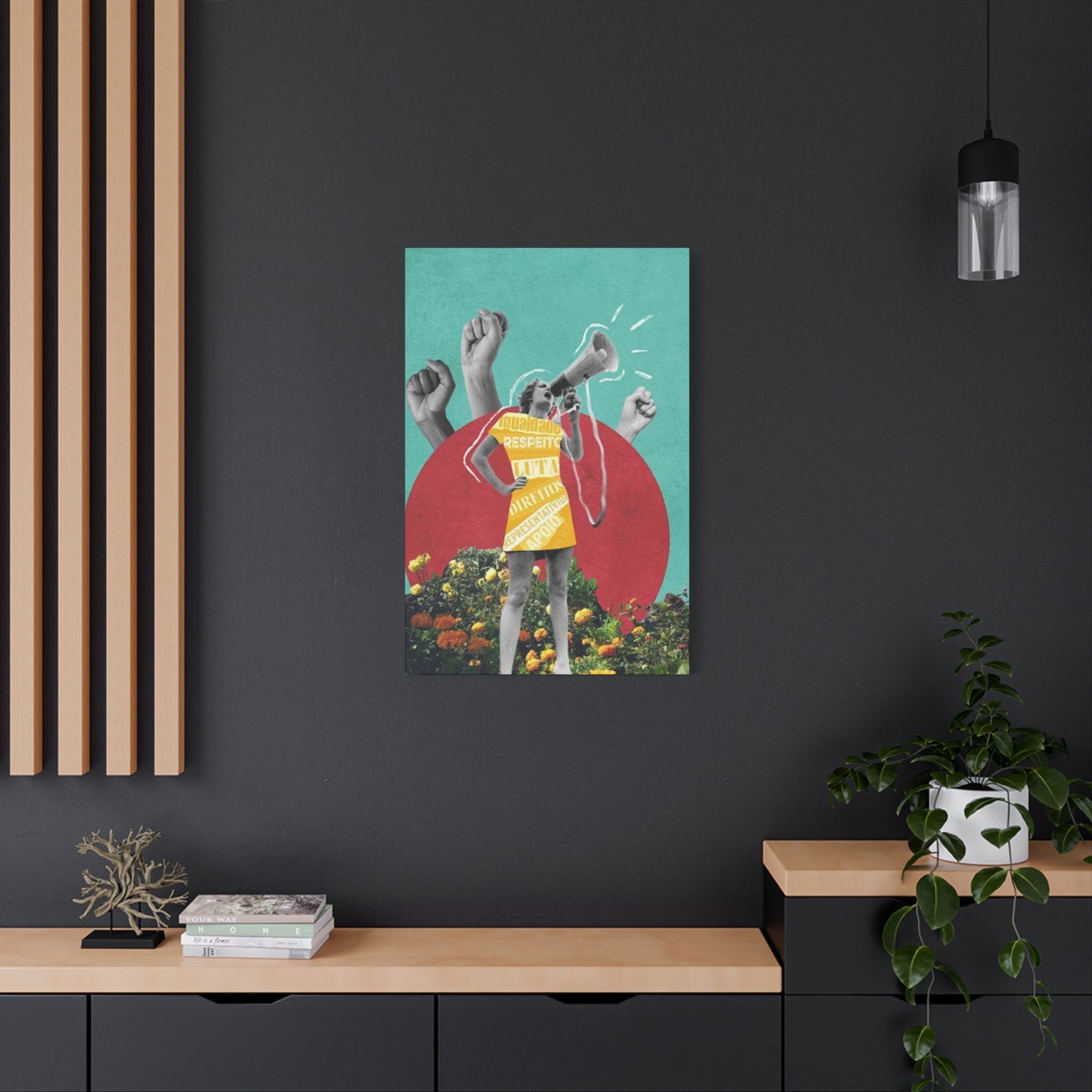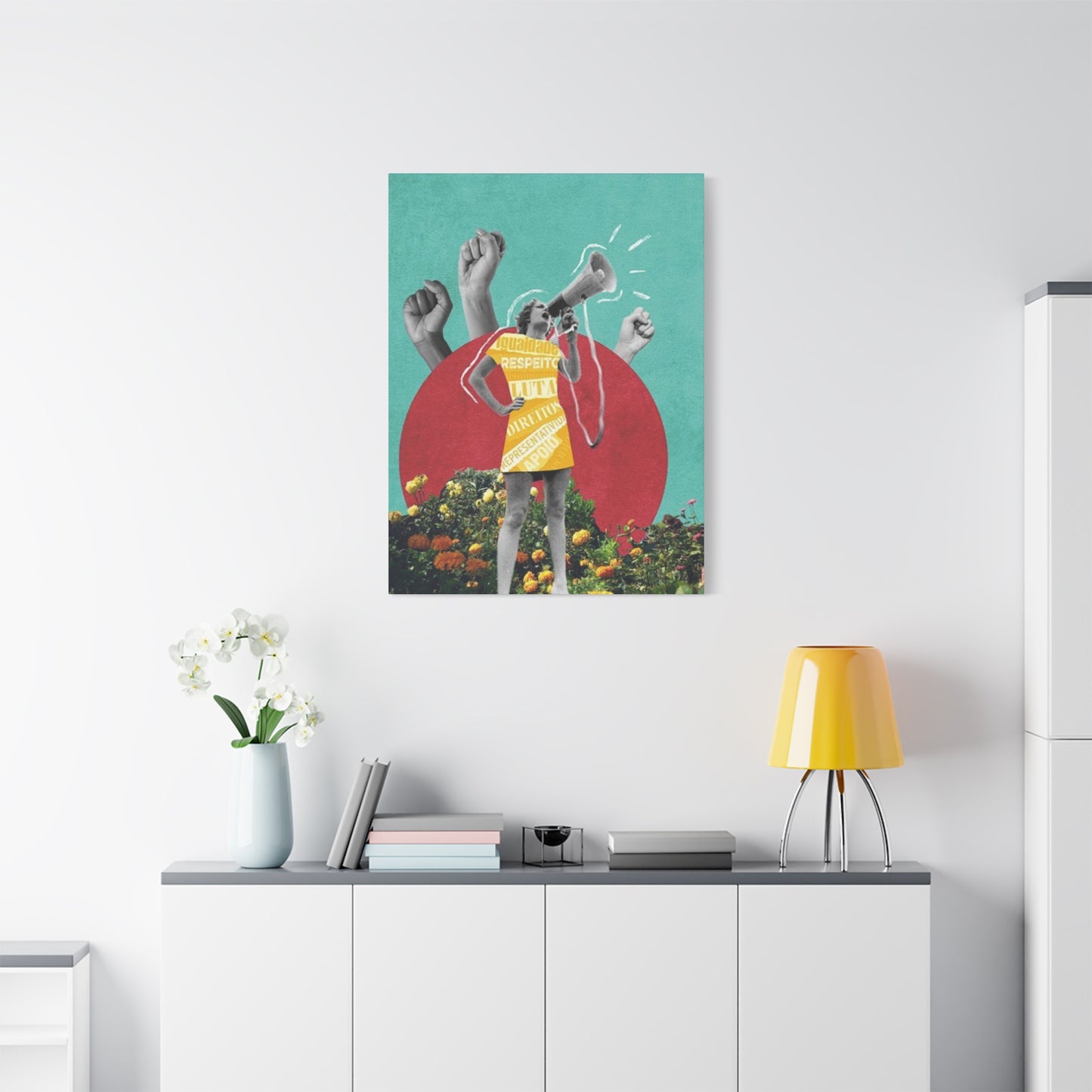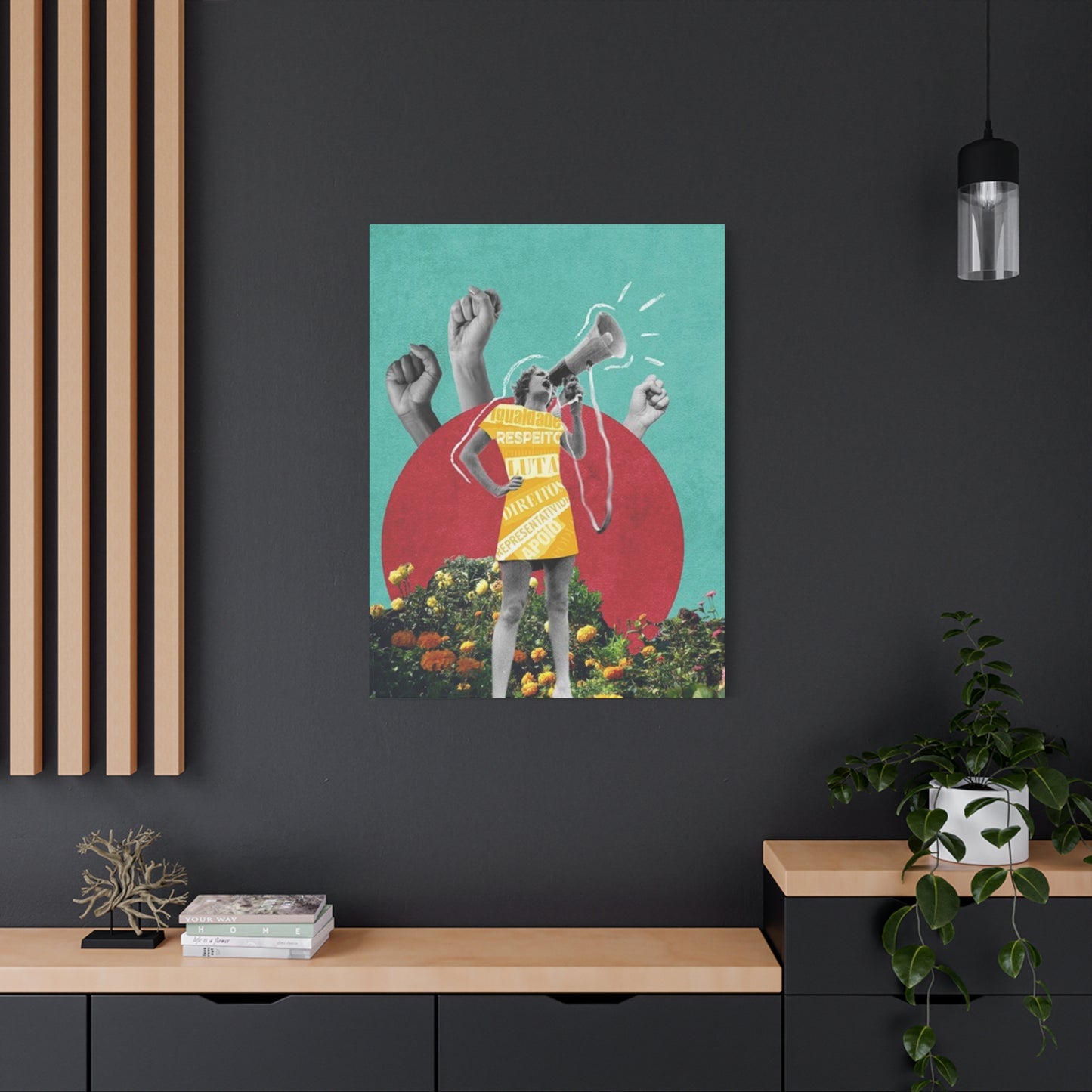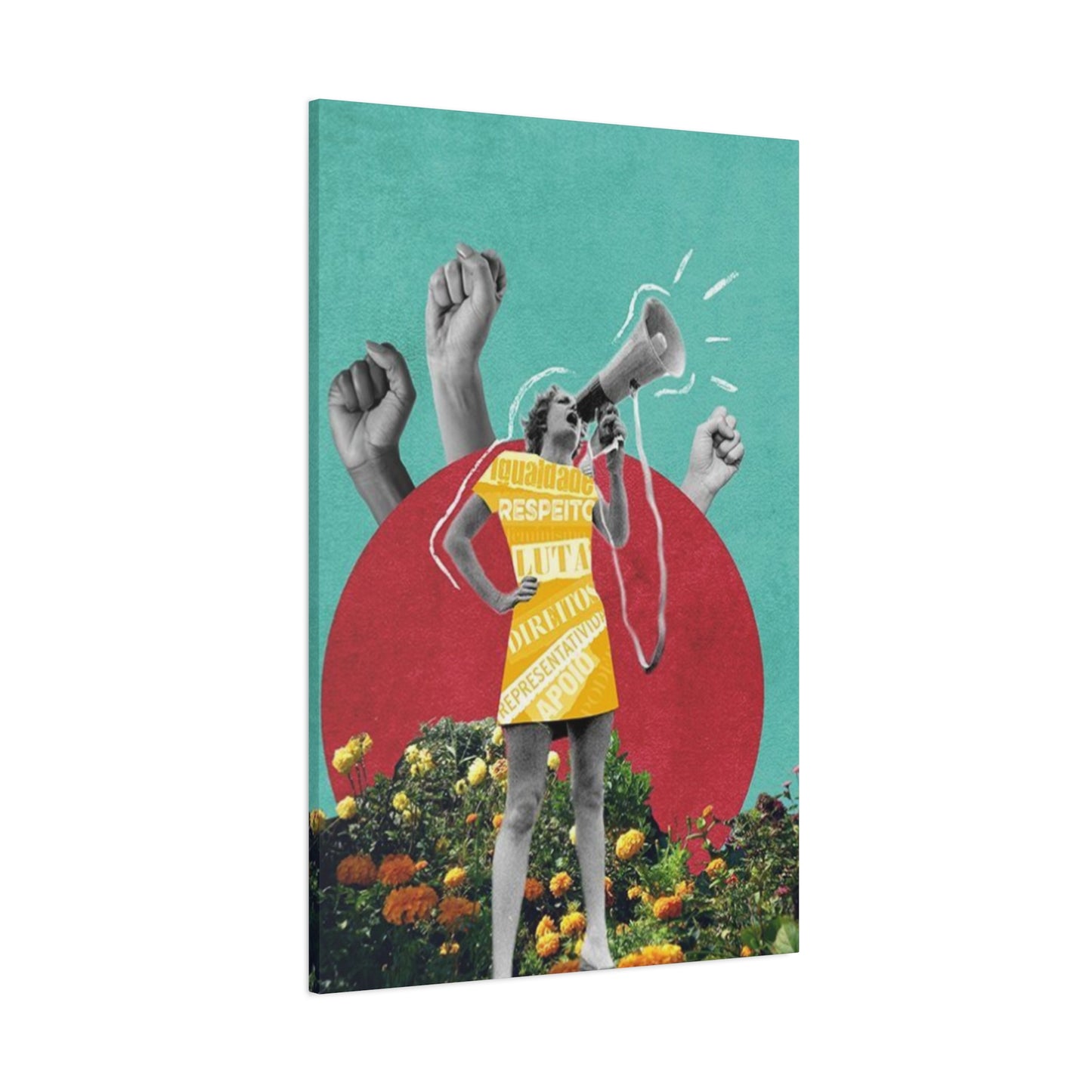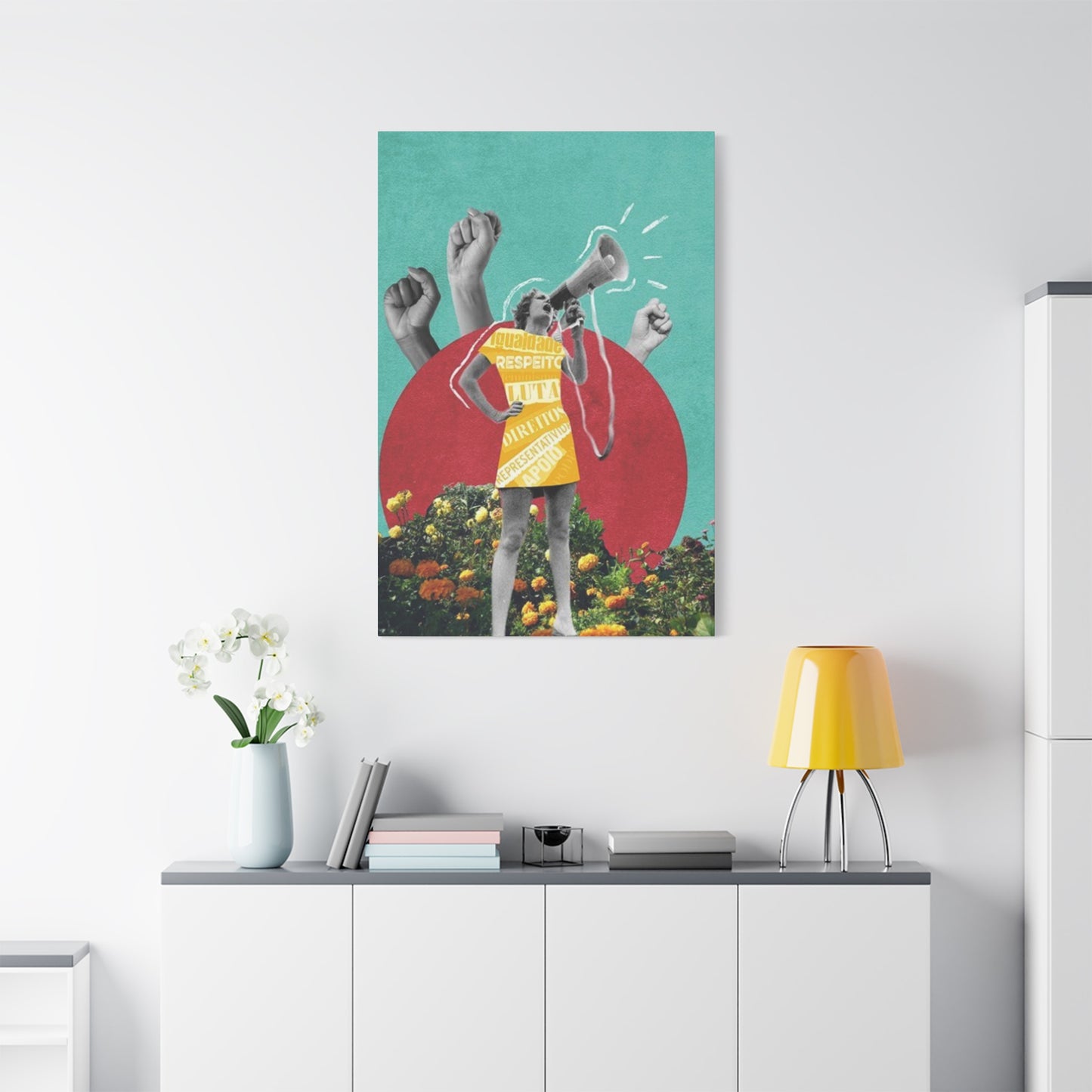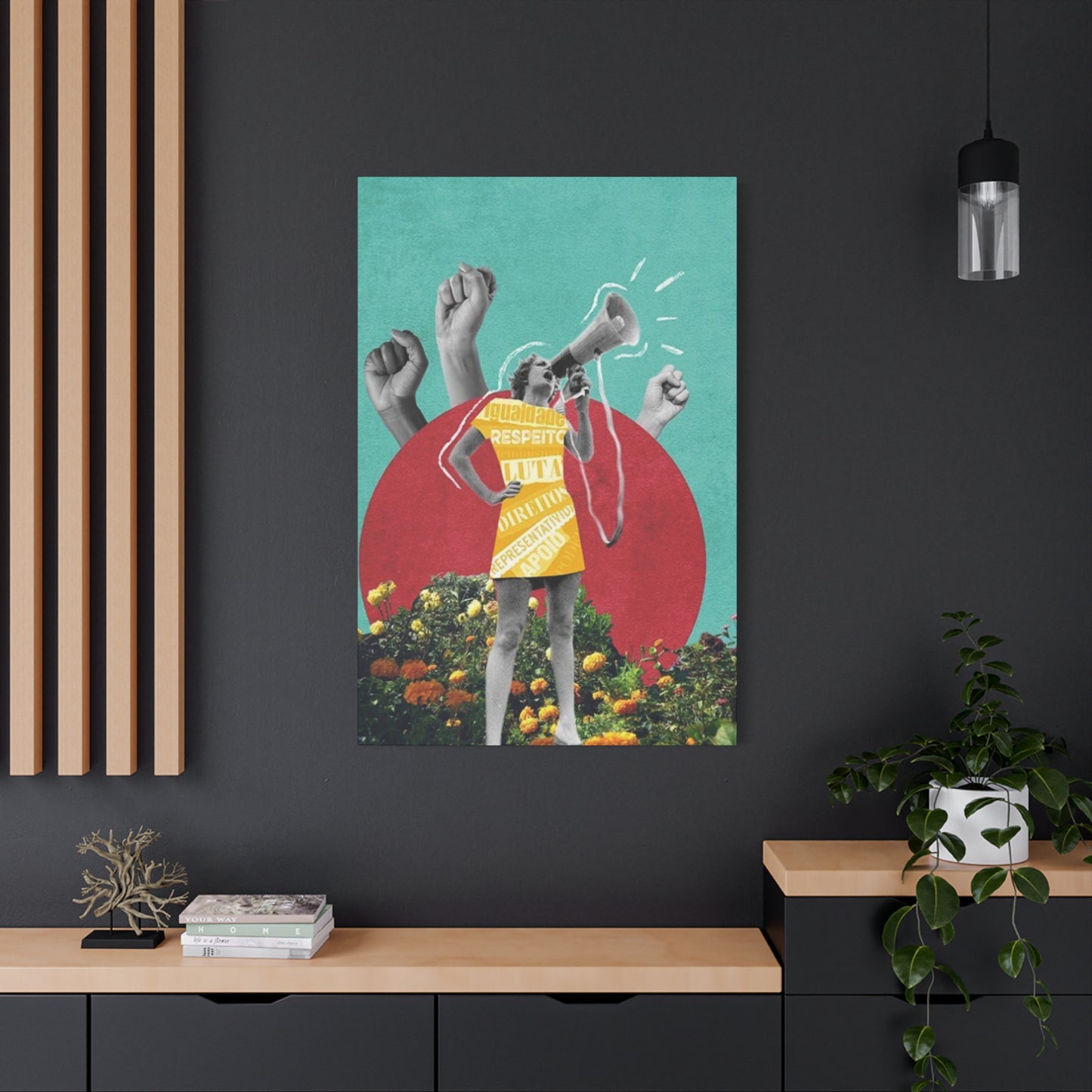Women on Protest in Modernist Wall art Prints: A Deep Dive into Artistic Expression and Social Advocacy
The convergence of feminist movements and modern artistic expression has created a powerful visual language that resonates deeply within contemporary interior design. Canvas prints featuring women in protest represent more than decorative elements; they embody the spirit of resistance, empowerment, and social transformation. These artistic pieces capture pivotal moments in history where women have stood courageously against injustice, demanding equality, recognition, and fundamental human rights. The modernist approach to depicting these powerful scenes transforms raw emotion and political activism into aesthetically compelling artwork that serves both decorative and educational purposes. Through bold color palettes, dynamic compositions, and thought-provoking imagery, these prints bring the energy of social movements directly into living spaces, creating constant reminders of the ongoing struggle for gender equality and social justice. The artistic representation of women demonstrating for their rights transcends mere documentation; it becomes a celebration of courage, solidarity, and the unwavering determination to create meaningful change in society.
Evolution of Protest Art in Women's Movements
Throughout history, women have utilized visual arts as a powerful medium to amplify their voices and document their struggles for equality and justice. The tradition of protest art featuring women dates back centuries, evolving from simple pamphlets and posters to sophisticated canvas prints that grace modern homes and galleries. During the suffragette movement of the early twentieth century, artistic propaganda became a crucial tool for communicating messages of empowerment and demanding voting rights. Artists created compelling images of determined women marching, holding banners, and standing united against oppressive systems. These early representations laid the groundwork for contemporary interpretations that continue to inspire and educate new generations.
The evolution of this art form reflects broader changes in society's understanding of gender roles, equality, and human rights. As feminist movements progressed through various waves, the artistic representation of women in protest evolved correspondingly, incorporating new techniques, styles, and messages that reflected changing priorities and perspectives. Contemporary canvas prints draw upon this rich historical legacy while adding modern sensibilities and aesthetic considerations that make them relevant and appealing to today's audiences. The transformation from utilitarian protest posters to sophisticated wall art demonstrates how movements for social justice can influence and enrich visual culture while maintaining their core messages of empowerment and resistance.
Understanding Modernism in Contemporary Wall Art Design
Modernism in visual arts represents a fundamental departure from traditional representational approaches, embracing abstraction, bold experimentation, and innovative techniques that challenge conventional aesthetic norms. When applied to canvas prints featuring women on protest, modernist principles create visually striking pieces that capture the essence and emotion of activism without necessarily adhering to photorealistic depiction. This artistic movement emphasizes simplification of forms, strategic use of color, and compositional dynamics that draw viewers into the emotional core of the subject matter. Modernist interpretations of protest scenes might feature geometric shapes representing crowds, bold color blocks symbolizing unity and determination, or abstracted figures that convey movement and energy without detailed facial features.
This approach allows artists to focus on the universal aspects of protest and resistance, creating images that transcend specific historical moments or individual identities to speak to broader human experiences of struggling against injustice. The minimalist tendencies within modernism also make these pieces versatile additions to various interior design schemes, as they can complement both contemporary and traditional spaces without overwhelming other decorative elements. By stripping away unnecessary details and focusing on essential visual elements, modernist protest art achieves a timeless quality that remains relevant regardless of changing design trends or shifting political landscapes.
Empowerment Art in Living Spaces
The presence of empowering imagery within residential and professional environments profoundly influences the psychological atmosphere of these spaces and the mindsets of those who inhabit them. Canvas prints depicting women engaged in protest serve as daily reminders of courage, resilience, and the power of collective action to effect meaningful change. These visual statements create environments that foster confidence, determination, and awareness of social issues that extend beyond personal concerns. Psychological research demonstrates that surrounding oneself with images reflecting personal values and aspirations can significantly impact motivation, self-perception, and emotional wellbeing. For individuals committed to gender equality and social justice, artwork celebrating women's activism reinforces their convictions and provides visual affirmation of their beliefs.
The bold, dynamic nature of protest imagery introduces energy and vitality into spaces, counteracting the stagnation that can occur in overly neutral or conventional decorative schemes. Furthermore, these pieces serve as conversation starters, facilitating discussions about important social issues and creating opportunities to educate visitors about historical and contemporary struggles for equality. The psychological effect extends beyond individual impact to influence the culture of entire households or workplaces, establishing environments that prioritize awareness, empathy, and commitment to positive social change. By choosing to display artwork celebrating women's resistance and activism, individuals make conscious statements about their values and contribute to normalizing conversations about feminism, equality, and social justice in everyday contexts.
Color Theory and Symbolism in Protest Artwork
The strategic application of color within canvas prints depicting women on protest carries profound symbolic significance that enhances the emotional impact and communicative power of these artistic pieces. Traditional protest movements have long associated specific colors with particular causes and messages, creating a visual language that viewers intuitively understand even without explanatory text. Bold reds frequently dominate protest artwork, symbolizing passion, urgency, revolutionary spirit, and sometimes the blood shed by those fighting for justice. Purple has historical connections to suffragette movements and continues to represent dignity, independence, and feminist causes in contemporary imagery. Black and white compositions evoke documentary photography and historical authenticity while creating dramatic visual contrast that emphasizes the stark nature of injustice and the clear divisions between oppression and freedom.
Vibrant oranges and yellows inject optimism and energy into compositions, suggesting the transformative potential of collective action and the bright future that activists work to create. Green occasionally appears in protest art connected to environmental activism and intersectional movements that link gender equality with ecological justice. Contemporary artists working in modernist styles often employ unexpected color combinations that challenge conventional associations while maintaining emotional resonance through careful consideration of color psychology. The interplay between warm and cool tones can create dynamic tension within compositions, mirroring the conflict inherent in protest movements while suggesting the possibility of resolution and progress. Understanding these color relationships allows viewers to appreciate the depth of meaning embedded within seemingly simple artistic choices and recognize the sophisticated visual communication occurring within these powerful canvas prints.
Compositional Techniques That Capture Movement and Energy
Effective artistic representation of protest requires compositional strategies that convey the inherent dynamism, momentum, and collective energy of people united in pursuit of social change. Artists working in this genre employ various techniques to transform static canvas surfaces into images that pulse with movement and vitality. Diagonal lines create visual pathways that guide viewers' eyes through compositions while suggesting forward motion and progressive change. Overlapping figures establish depth and convey the sense of crowds unified in common purpose, while strategic placement of individuals within group compositions can highlight both collective strength and individual courage.
The use of blurred or abstracted elements suggests motion and energy without requiring precise rendering of every detail, allowing modernist approaches to capture the essence of protest more effectively than photorealistic depictions might achieve. Asymmetrical balance introduces visual tension that mirrors the confrontational nature of demonstrations while maintaining aesthetic cohesion that makes artwork pleasant to view over extended periods. Strategic empty spaces within compositions can represent possibility, potential, and the open future that activists work to create through their efforts. Varying scale among elements creates visual hierarchy that directs attention to focal points while maintaining overall compositional integrity. Contemporary artists often incorporate techniques borrowed from photography, such as dynamic cropping and unusual perspectives, to create fresh interpretations of familiar protest imagery that feel both timeless and thoroughly modern.
The Role of Typography and Textual Elements in Protest Art
Many canvas prints featuring women on protest incorporate textual elements that enhance the communicative power of purely visual components while adding layers of meaning and historical specificity to artwork. Typography serves multiple functions within these compositions, from reproducing actual protest signs and banners to adding artistic interpretations of movement slogans and demands. The stylistic treatment of text can dramatically affect the overall aesthetic impact of pieces, with bold, assertive lettering conveying determination and strength while more delicate typographic choices might emphasize dignity and resolve. Hand-lettered elements introduce personal, human qualities that connect viewers emotionally to the individuals represented within artwork, while clean, modernist typography creates associations with contemporary design sensibilities and progressive values.
The integration of text with visual elements requires careful consideration to maintain compositional balance and prevent either component from overwhelming the other. Effective designs achieve synergy between words and images, with each element reinforcing and amplifying the impact of the other. Some artists incorporate text fragments or partial words that require viewers to engage actively with artwork, completing meanings through their own interpretation and understanding. This participatory aspect transforms passive viewing into active contemplation, deepening the impact and memorability of pieces. Historical reproductions of actual protest signs preserve authentic voices from past movements, creating direct connections between contemporary viewers and the courageous individuals who fought for the rights and freedoms we enjoy today. The careful selection and presentation of textual elements distinguishes thoughtful, sophisticated artwork from simplistic or heavy-handed propaganda, maintaining aesthetic appeal while delivering powerful messages about justice and equality.
Materials and Production Techniques for Quality Canvas Prints
The technical aspects of producing canvas prints significantly impact both the aesthetic qualities and longevity of artwork depicting women on protest. High-quality reproduction begins with resolution considerations, ensuring that images contain sufficient detail to appear crisp and professional when enlarged to wall-display dimensions. Professional giclée printing technology utilizes archival-quality inks that resist fading, yellowing, and deterioration over time, preserving the visual impact of pieces for decades under appropriate display conditions. Canvas material selection influences the texture and finish of final products, with different weave densities and fabric compositions producing distinct visual and tactile qualities. Gallery-wrapped stretching techniques that wrap printed canvas around wooden frames create polished, professional appearances that require no additional framing while providing three-dimensional depth that enhances visual impact.
Protective coatings applied to finished prints defend against moisture, dust, and minor abrasions while potentially offering UV protection that further extends the lifespan of artwork. The weight and construction quality of stretcher bars affect both the durability of pieces and the tautness of canvas surfaces, with heavier, more robust frames preventing sagging and warping over time. Edge printing techniques determine whether images wrap around frame sides or feature solid colors or complementary designs on these visible surfaces. Quality production also considers color calibration processes that ensure printed reproductions accurately reflect the intended hues and tones of original digital files, maintaining the emotional impact and symbolic significance of color choices. Understanding these technical considerations helps consumers identify superior products that will maintain their beauty and message over extended periods, making them worthwhile investments for those committed to surrounding themselves with meaningful, empowering art.
Integrating Protest Art into Various Interior Design Styles
The versatility of modernist canvas prints featuring women on protest allows them to enhance diverse interior design schemes while maintaining their powerful messages and visual impact. In contemporary minimalist spaces, these pieces provide focal points that introduce warmth, humanity, and purpose without cluttering clean, streamlined aesthetics. The bold graphics and simplified forms characteristic of protest art complement minimalist principles while adding emotional depth often lacking in overly austere environments. Industrial-style interiors benefit from the raw, authentic energy of protest imagery, with the gritty determination captured in these pieces echoing the honest, utilitarian aesthetics of exposed brick, metal fixtures, and reclaimed wood elements. Scandinavian design schemes, with their emphasis on natural materials and cozy functionality, can incorporate protest art as statement pieces that introduce social consciousness and global awareness into otherwise domestically focused spaces.
Eclectic and bohemian interiors naturally accommodate protest artwork, which adds to the collected, meaningful aesthetic these styles celebrate while reinforcing values of individuality and social engagement. Even traditional or transitional spaces can successfully incorporate carefully selected protest art, particularly pieces with classical compositional elements or subdued color palettes that complement more conservative decorative approaches. The key to successful integration lies in considering scale, color relationships, and thematic connections with existing decorative elements. Large-scale pieces make dramatic statements suitable for prominent walls in living rooms, dining areas, or home offices, while smaller prints can create gallery walls that tell comprehensive visual stories about women's struggles and achievements. Thoughtful placement ensures that artwork receives appropriate attention without overwhelming spaces or creating visual discord with surrounding elements.
Educational Value and Conversation-Starting Potential
Beyond their aesthetic contributions, canvas prints depicting women on protest serve important educational functions by preserving historical memory and sparking conversations about ongoing struggles for equality and justice. These visual reminders of past activism help prevent historical amnesia, ensuring that younger generations understand the courage and sacrifice required to achieve rights and freedoms often taken for granted. By displaying protest art prominently in homes, offices, and public spaces, individuals create opportunities for intergenerational dialogue about social movements, sharing personal experiences and historical knowledge with those less familiar with these crucial aspects of cultural history. The accessibility of visual art makes it particularly effective for initiating discussions that might otherwise feel intimidating or academic, allowing people to engage with complex social issues through approachable, emotionally resonant imagery.
Children growing up in environments featuring empowering representations of women learn early about gender equality, civic engagement, and the importance of standing up against injustice. These visual lessons complement formal education while providing constant, normalized exposure to concepts of activism and social responsibility. Visitors to spaces featuring protest art often inquire about specific pieces, creating natural openings for hosts to share information about the movements, individuals, or causes represented. These conversations can deepen relationships, reveal shared values, and inspire others to become more engaged with social justice issues in their own lives. The educational impact extends to the aesthetic realm as well, with thoughtful protest art introducing viewers to modernist techniques, color theory, and compositional strategies that enhance their overall visual literacy and appreciation for artistic expression. By combining beauty with meaning, these pieces demonstrate that art can simultaneously satisfy aesthetic desires and fulfill higher purposes of education, inspiration, and social commentary.
Feminist Theory and Visual Representation in Modern Art
The intersection of feminist theory and visual representation creates rich analytical frameworks for understanding and appreciating canvas prints featuring women on protest. Feminist art criticism examines how women are depicted, questioning whether representations empower or objectify, challenge or reinforce traditional gender roles, and center women's perspectives or filter them through patriarchal lenses. Artwork depicting women in protest inherently challenges conventional representations by showing women as agents rather than objects, active participants in shaping history rather than passive subjects awaiting rescue or definition by others. This shift in representational paradigms connects to broader feminist goals of recognizing women's autonomy, honoring their contributions to social progress, and expanding limited cultural narratives about appropriate feminine behavior and concerns.
Intersectional feminist approaches examine how protest art represents diversity among women, considering whether imagery reflects the experiences and contributions of women across different racial, economic, and cultural backgrounds or privileges certain perspectives while marginalizing others. The most powerful and authentic protest art acknowledges the complexity and diversity of women's experiences while finding visual languages that communicate universal aspects of struggle, resistance, and hope. Feminist analysis also considers the politics of visibility, recognizing that simply depicting women in empowered, active roles constitutes a form of resistance against cultural forces that seek to minimize, dismiss, or erase women's contributions to social change. By choosing to display and celebrate protest art, individuals participate in these larger cultural conversations about representation, power, and the ongoing project of achieving genuine equality in all aspects of society. Understanding these theoretical frameworks enriches appreciation for protest art while connecting personal decorative choices to broader movements for social transformation and cultural change.
The Therapeutic and Affirming Qualities of Empowerment Art
Surrounding oneself with imagery that reflects personal values and celebrates human courage provides significant therapeutic benefits that extend beyond simple aesthetic pleasure. Canvas prints depicting women on protest offer daily affirmation for individuals committed to social justice, serving as visual reminders that personal struggles connect to larger historical patterns of resistance and transformation. During challenging periods when social progress seems stagnant or threatened, these images provide encouragement by documenting past victories and demonstrating the effectiveness of persistent, organized activism. For individuals who have personally participated in protests or social movements, relevant artwork validates their experiences and contributions while helping them maintain connection to communities of like-minded activists. Those unable to participate actively in demonstrations due to physical limitations, caregiving responsibilities, or other constraints can experience vicarious satisfaction and maintained connection to causes through meaningful visual representations in their personal spaces.
The presence of empowering imagery creates psychological environments that foster resilience, determination, and hope even when external circumstances feel discouraging or overwhelming. Mental health professionals increasingly recognize the importance of environmental factors in emotional wellbeing, acknowledging that thoughtfully curated personal spaces can support mental health just as surely as cluttered, chaotic, or value-misaligned environments can undermine it. Protest art specifically addresses feelings of powerlessness that often accompany awareness of large-scale social problems by illustrating concrete examples of ordinary people creating extraordinary change through collective action. This visual evidence that transformation is possible combats the despair and paralysis that can result from contemplating entrenched injustice without seeing pathways to improvement. The therapeutic value extends to creating spaces where individuals feel authentic and integrated, with external environments reflecting internal values and commitments rather than requiring constant performance or suppression of deeply held beliefs.
Creating Gallery Walls with Thematically Connected Pieces
The gallery wall concept offers creative opportunities for displaying multiple canvas prints that together tell comprehensive visual stories about women's activism and social progress. This approach allows for nuanced exploration of themes through careful curation of complementary pieces that create dialogue among themselves while building toward unified aesthetic and conceptual statements. Successful gallery walls balance variety with cohesion, incorporating pieces with different sizes, orientations, and specific subjects while maintaining connections through color palettes, artistic styles, or thematic relationships. One effective strategy involves combining images representing different historical periods, illustrating the continuity of women's struggles across generations while highlighting how specific issues and approaches have evolved. Another approach focuses on intersectional activism, pairing protest imagery with artwork celebrating diverse women's contributions across racial, cultural, and economic contexts.
The physical arrangement of pieces within gallery walls carries meaning as well, with central positioning emphasizing particular images as focal points while surrounding pieces provide context and supporting narrative elements. Asymmetrical arrangements introduce dynamic visual energy appropriate to protest themes, while more structured grid layouts might emphasize organization, determination, and the systematic nature of sustained activism. Spacing between individual pieces affects overall impact, with generous gaps creating breathing room that allows each image individual attention while closer positioning emphasizes connections and collective narratives. The scale variations possible within gallery walls accommodate both grand statement pieces and more intimate works, creating visual rhythms that maintain viewer interest while preventing monotony. Including complementary decorative elements such as meaningful quotes, small sculptural objects, or historical artifacts can enhance gallery walls by adding texture and three-dimensional interest. The flexibility of gallery wall approaches allows them to grow and evolve over time, with new pieces added to commemorate current movements or honor recently recognized historical figures and events.
Ethical Considerations in Protest Art Collection and Display
Thoughtful collectors of canvas prints featuring women on protest must navigate various ethical considerations to ensure their choices honor the movements and individuals represented while avoiding appropriation or commodification of struggle. Researching the origins and contexts of specific images helps ensure accurate understanding and respectful presentation, preventing misrepresentation or trivialization of serious historical events and ongoing social issues. Supporting artists and companies that demonstrate genuine commitment to social justice causes rather than those simply capitalizing on aesthetic trends represents one way to align purchasing decisions with values. This might involve prioritizing independent artists, women-owned businesses, or organizations that donate portions of proceeds to relevant activist groups or charitable causes. Considering representation and diversity within personal collections prevents inadvertent centering of certain experiences while marginalizing others, working toward comprehensive understanding of women's varied struggles and contributions across different contexts.
Ethical display practices include providing context for images when hosting guests, ensuring that admiration for artistic qualities doesn't eclipse awareness of the serious matters represented. This might involve being prepared to discuss the historical events, movements, or issues depicted when visitors inquire about pieces. Avoiding performative activism remains crucial, recognizing that simply displaying protest art doesn't constitute meaningful engagement with social justice issues and should complement rather than substitute for active participation in creating positive change. The commercial nature of purchasing artwork shouldn't obscure the reality that genuine commitment to equality requires ongoing effort, education, and concrete support for affected communities and relevant causes. Ethical collectors remain aware of their own positions and privileges, recognizing how personal identities might affect relationships to represented struggles and working to approach these images with appropriate humility and respect. By maintaining ethical awareness throughout the process of selecting, purchasing, and displaying protest art, individuals ensure their choices truly honor the courage and sacrifices of those who fought and continue fighting for justice.
The Influence of Social Media on Contemporary Protest Imagery
Contemporary protest movements unfold substantially through digital platforms, fundamentally altering how activism is documented, shared, and transformed into artistic expression. The immediacy of social media allows protest images to circulate globally within minutes, creating unprecedented awareness and solidarity across geographic boundaries. This digital ecosystem influences the aesthetic qualities of modern protest photography and artwork, with compositions often optimized for small screens and rapid scrolling rather than contemplative viewing. The viral nature of powerful images means that certain photographs and artistic interpretations achieve iconic status remarkably quickly, entering collective visual vocabularies and inspiring countless artistic variations and reinterpretations. Canvas prints featuring women on protest increasingly draw upon this digital archive of contemporary activism, translating screen-based images into physical objects that can be contemplated in slower, more sustained ways than typically occurs during social media browsing.
This transformation from ephemeral digital content to permanent physical artwork represents meaningful cultural preservation, rescuing important images from the constantly refreshing streams of online platforms where even significant content quickly becomes buried beneath newer posts. The hashtag activism that characterizes much contemporary organizing creates verbal and visual connections between disparate movements, influencing artistic choices about how to represent solidarity and intersectionality within protest imagery. Artists working in this space must navigate questions about permissions, attribution, and compensation when transforming protest photographs into commercial artwork, particularly given that many powerful images originate from participant documentation rather than professional photojournalism. The democratization of image creation and distribution means that protest art increasingly emerges from movements themselves rather than outside observers, shifting perspectives and potentially creating more authentic, nuanced representations. Understanding these digital influences helps contextualize contemporary protest art within broader cultural and technological landscapes while appreciating both the opportunities and challenges presented by our hyper-connected, image-saturated moment.
Selecting Appropriate Sizes and Placement for Maximum Impact
The physical dimensions and strategic placement of canvas prints significantly affect their visual impact and contribution to overall interior environments. Large-scale pieces measuring several feet in width or height create dramatic focal points that dominate spaces and make unmistakable statements about priorities and values. These substantial artworks work best on prominent walls with adequate viewing distances, such as above sofas, in dining areas, or facing entryways where they immediately establish the character and concerns of spaces. Medium-sized prints offer versatility, working well as standalone statement pieces in more intimate spaces or as components within gallery wall arrangements that build larger narratives through multiple images. Smaller prints provide opportunities for more subtle integration of protest themes, working effectively in personal spaces like bedrooms or home offices where they offer daily inspiration without overwhelming limited square footage. Vertical orientations emphasize upward movement and aspiration, reinforcing themes of progress and striving toward better futures, while horizontal formats create stability and breadth, suggesting widespread movements and expansive visions of social transformation.
Placement height significantly affects how viewers interact with artwork, with pieces hung at standard eye level creating direct, engaging relationships while higher positioning might emphasize aspirational qualities or create more formal, gallery-like presentations. The surrounding context must be considered, ensuring adequate negative space around pieces prevents visual clutter while allowing artwork breathing room to achieve full impact. Lighting dramatically affects how colors and details appear, with natural light creating dynamic, changing presentations throughout the day while dedicated picture lighting ensures consistent visibility and emphasis regardless of ambient conditions. The relationship between artwork and furniture beneath or adjacent to it creates compositional relationships that either enhance or diminish overall effect, with proportional balance between elements contributing to harmonious, professional-looking arrangements. Thoughtful attention to these practical considerations ensures that powerful imagery achieves its full potential to inspire, educate, and transform the spaces and individuals it touches.
The Economic Landscape of Protest Art and Supporting Artists
The marketplace for canvas prints depicting women on protest reflects broader dynamics within contemporary art commerce, balancing accessibility with artist compensation and mass production with artistic integrity. Original artwork by established artists commands premium prices that reflect both artistic merit and market forces, with pieces increasingly valuable as artists gain recognition or as historical significance becomes more widely acknowledged. Limited edition prints offer middle-ground options that maintain some exclusivity and value while making artwork accessible to broader audiences at more moderate price points. Mass-produced reproductions bring protest imagery to the widest possible audiences at minimal cost, democratizing access to empowering visual culture but raising questions about artistic attribution, quality standards, and fair compensation for original creators. Supporting emerging artists working in protest-themed mediums provides opportunities to acquire unique pieces while fostering artistic communities committed to social justice themes.
This might involve purchasing directly from artists through online platforms, attending relevant exhibitions and shows, or commissioning custom pieces that reflect specific interests or perspectives. The rise of print-on-demand services has lowered barriers to entry for artists while potentially flooding markets with derivative or low-quality offerings that complicate consumers' efforts to identify superior products. Educated consumers research artists' backgrounds and commitments, seeking creators whose work demonstrates authentic engagement with social justice issues rather than superficial exploitation of trendy aesthetics. Pricing structures should reflect genuine costs including artist time, material quality, and fair labor practices rather than merely undercutting competitors through questionable production methods or worker exploitation. The economic choices surrounding protest art purchasing carry ethical implications, with spending decisions either supporting or undermining the very values that artwork ostensibly celebrates. By approaching these transactions thoughtfully and prioritizing businesses and artists genuinely committed to social progress, consumers ensure their purchases align with their principles while fostering economic systems that reward authentic artistic expression and meaningful social engagement.
Intersectionality and Inclusive Representation in Protest Imagery
Contemporary understanding of social justice emphasizes intersectionality, recognizing that various forms of oppression and identity interact in complex ways that cannot be understood through single-axis analysis. Canvas prints depicting women on protest must grapple with these complexities, working to represent the diversity of women's experiences while avoiding tokenism or superficial gestures toward inclusion. Authentic intersectional representation acknowledges that race, class, sexuality, disability status, and numerous other factors profoundly shape individual experiences of both oppression and activism, creating varied perspectives and priorities even within movements nominally unified around gender equality. Artwork that successfully navigates these complexities depicts diverse women in leadership and participatory roles, avoiding the historical tendency to center white, middle-class women's experiences while marginalizing others' contributions. This requires conscious attention to whose stories get told, whose images get celebrated, and whose struggles receive recognition and commemoration.
The most powerful protest art acknowledges solidarity without erasing difference, finding visual languages that communicate both unity and diversity within movements working toward shared goals. Artists and consumers alike must remain aware of historical patterns where women of color, working-class women, disabled women, and other marginalized groups have done substantial activist labor while receiving minimal credit or recognition. Contemporary protest art offers opportunities to correct these historical imbalances by specifically highlighting previously overlooked contributors and movements. This corrective project requires ongoing education about diverse women's histories and willingness to seek out and amplify voices that dominant narratives have historically excluded. Intersectional awareness also means recognizing that gender equality cannot be separated from broader struggles against racism, economic exploitation, ableism, heteronormativity, and other systemic oppressions. The most sophisticated protest art reflects these connections, depicting activism as multifaceted engagement with complex, interrelated social problems rather than narrow focus on isolated single issues.
Preservation and Care for Canvas Art Investment
Proper maintenance and care ensure that canvas prints depicting women on protest remain vibrant and impactful for decades, preserving both financial and sentimental investments in meaningful artwork. Environmental conditions significantly affect longevity, with excessive moisture, extreme temperatures, and direct sunlight all potentially damaging canvas materials and printed surfaces. Displaying pieces away from windows receiving intense sun exposure protects against UV-induced fading, while climate-controlled indoor environments prevent moisture damage and material deterioration. Regular dusting using soft, dry cloths or specialized art-cleaning tools removes accumulated particles without damaging delicate surfaces or applying excessive pressure that might distort canvas tension. Avoiding chemical cleaners unless specifically formulated for canvas artwork prevents accidental damage from harsh substances that might react negatively with inks or protective coatings. Proper hanging hardware appropriate to artwork weight prevents stress on frames and canvases that might cause warping, sagging, or structural failure over time.
Periodically inspecting pieces for signs of deterioration, pest activity, or environmental damage allows for early intervention before minor issues become serious problems requiring expensive professional restoration. Maintaining consistent humidity levels prevents canvas materials from expanding and contracting excessively, movements that can cause cracking in paint or printed surfaces over time. Rotating displayed artwork periodically allows pieces temporary respites from exposure while preventing uneven fading that might occur when some areas receive more light than others. Professional conservation services can address significant damage or aging effects, though prevention remains far more cost-effective than restoration. Creating documentation including purchase information, artist details, and condition reports facilitates insurance claims if necessary and provides valuable historical context for future generations who might inherit pieces. Understanding these preservation principles helps ensure that powerful protest imagery continues inspiring and educating viewers long into the future, maintaining its role in preserving historical memory and promoting ongoing engagement with social justice causes.
The Role of Art in Sustaining Long-Term Activist Commitment
Social movements require sustained engagement over extended periods to achieve meaningful change, making the question of how to maintain motivation and commitment across years or decades crucial to activist success. Canvas prints depicting women on protest contribute to this sustainability by providing constant visual reminders of why struggles matter and evidence that persistent effort eventually yields results. These tangible presence in daily environments keeps social justice concerns mentally accessible even during periods when individuals cannot actively participate in demonstrations or organizing activities due to work obligations, family responsibilities, or personal circumstances. The inspirational quality of powerful protest imagery helps combat burnout and discouragement that naturally occur when confronting entrenched injustice over long timescales. Seeing representations of past victories and ongoing struggles reminds viewers that they participate in movements larger than themselves, connecting individual actions to collective historical processes of social transformation.
This broader perspective helps maintain motivation during inevitable setbacks and disappointments that accompany activist work. The aesthetic pleasure derived from beautiful, well-crafted protest art creates positive associations with social justice engagement, countering tendencies to view activism as joyless obligation rather than meaningful, rewarding participation in projects of collective liberation. Creating spaces that reflect personal values through thoughtful art curation contributes to overall wellbeing and life satisfaction, factors that support rather than compete with sustained activist engagement. The educational function of protest art helps maintain political awareness and historical consciousness, preventing the ignorance or forgetting that allows injustices to persist or resurface in new forms. By combining beauty, meaning, and inspiration, canvas prints featuring women on protest become valuable tools for sustaining the long-term commitment necessary to achieve and maintain meaningful social progress.
Future Directions in Protest Art and Emerging
Technological advancement continues reshaping how protest movements operate and how their activities get documented and transformed into artistic expression. Emerging technologies offer unprecedented opportunities for creating, distributing, and experiencing protest art while also raising new questions about authenticity, ownership, and accessibility. Digital art platforms allow artists to create sophisticated works using tablets and software, opening creative possibilities unavailable through traditional media while potentially lowering barriers to entry for aspiring artists. Augmented reality applications might soon allow viewers to experience protest art in immersive ways, perhaps seeing static canvas prints animated through smartphone applications that overlay sound, movement, or additional contextual information. Three-dimensional printing technologies could enable production of sculptural protest art at scales and price points previously impossible, democratizing access to diverse artistic forms.
Blockchain technologies and associated concepts like non-fungible tokens raise complex questions about digital art ownership, potentially creating new economic models that better compensate artists while ensuring verifiable authenticity. The increasing sophistication of artificial intelligence image generation presents both opportunities and challenges, potentially allowing rapid creation of protest-themed artwork while raising questions about creativity, authorship, and the value of human artistic labor. Virtual and mixed reality technologies might transform how people experience and interact with protest art, creating immersive environments that generate deeper emotional engagement than possible with traditional two-dimensional images. The continuing evolution of social media platforms influences what types of images gain traction and visibility, potentially shaping artistic choices as creators optimize work for digital discovery and sharing. Global connectivity enables unprecedented collaboration among artists from different cultures and contexts, potentially yielding richer, more diverse protest art that reflects worldwide struggles for justice and equality. As these technologies develop, maintaining focus on core purposes of protest art becomes crucial, ensuring that technological sophistication serves rather than overshadows goals of inspiration, education, and social transformation.
Conclusion:
The decision to incorporate canvas prints depicting women on protest into personal environments represents far more than simple decorative choice; it constitutes meaningful participation in ongoing cultural conversations about equality, justice, and the power of collective action to transform societies. These artistic pieces serve multiple simultaneous functions, providing aesthetic pleasure while educating viewers, inspiring continued commitment to social progress, and honoring the courage of those who risked safety and comfort to demand better futures. The modernist approaches that characterize much contemporary protest art create visually sophisticated pieces that enhance diverse interior design schemes while maintaining powerful messages about resistance, empowerment, and the necessity of standing against injustice regardless of personal cost. By bringing imagery of women demonstrating for their rights into homes and workplaces, individuals create daily encounters with history, courage, and possibility that shape consciousness and reinforce values in ways that abstract political commitments alone cannot achieve.
The rich tradition of protest art spanning centuries demonstrates humanity's enduring need to document struggles for justice while creating beauty from acts of resistance. Contemporary canvas prints inherit this legacy while adapting to present aesthetic sensibilities and technological capabilities, resulting in artwork that feels both timeless and thoroughly modern. The careful consideration of color theory, compositional dynamics, and symbolic elements that characterizes quality protest art elevates these pieces beyond propaganda or mere documentation to achieve status as legitimate artistic expressions deserving serious aesthetic appreciation alongside their social and political significance.The psychological and emotional benefits of surrounding oneself with empowering imagery extend throughout daily life, creating environments that foster confidence, awareness, and sustained commitment to positive social change. These effects multiply when protest art sparks conversations that educate others, share historical knowledge, and inspire expanded engagement with justice issues.
The educational value of these pieces particularly benefits younger generations, providing accessible entry points to understanding complex social movements and the ongoing nature of struggles for equality that each generation must continue.Ethical considerations surrounding protest art collection and display ensure that commercial transactions honor rather than exploit the movements and individuals represented. By supporting authentic artists and businesses genuinely committed to social justice causes, choosing diverse and intersectional representation, and maintaining awareness of the serious realities behind beautiful imagery, collectors ensure their choices align with professed values. This thoughtful approach transforms art acquisition from simple consumption to meaningful participation in sustaining artistic communities and activist movements.
The technical aspects of producing and preserving quality canvas prints ensure that powerful images maintain their impact over decades, serving as lasting testimonials to women's courage and achievements. Attention to materials, printing technologies, environmental conditions, and proper care protects both financial and sentimental investments in meaningful artwork while ensuring that important visual records of social movements survive for future generations to study and appreciate.As technologies continue evolving and social movements adapt to changing conditions, protest art will undoubtedly transform in form and distribution while maintaining core functions of inspiration, education, and cultural preservation. The fundamental human need to create meaning through visual expression and to honor courage through commemoration ensures that artwork depicting women on protest will remain relevant regardless of stylistic or technical changes in how such pieces are produced and experienced.
Ultimately, canvas prints featuring women on protest contribute to creating homes and workplaces that reflect deeply held values while surrounding inhabitants with daily reminders of possibility, courage, and the ongoing nature of work toward justice and equality. These pieces transform walls into statements, rooms into sanctuaries of purpose, and houses into homes that truly represent the beliefs and commitments of those who inhabit them. The enduring power of visual activism in domestic spaces lies precisely in this transformation of the everyday into the meaningful, the decorative into the significant, and the personal into the political. By choosing to display these powerful images, individuals participate in preserving historical memory, inspiring future action, and maintaining cultural spaces where struggles for justice remain visible, honored, and forever relevant to the ongoing human project of creating more equitable, compassionate, and just societies for all people regardless of gender or any other identity characteristic.
The presence of women on protest captured in modernist wall art serves as perpetual reminder that progress is neither automatic nor guaranteed, but rather results from persistent effort by courageous individuals willing to challenge unjust systems. These canvas prints celebrate not only historical achievements but also ongoing struggles, maintaining awareness that vigilance and continued action remain necessary to protect gains and advance toward fuller realization of equality and justice for all. In choosing to surround ourselves with these powerful images, we commit to remembering, honoring, and continuing the vital work of those who came before while inspiring ourselves and others to contribute meaningfully to the movements that will shape our collective future. The walls we decorate become canvases for our values, and through thoughtful curation of protest art, we transform our personal spaces into environments that nurture commitment to justice, celebrate human courage, and maintain constant awareness of our responsibilities to contribute positively to the ongoing evolution of society toward greater equality, dignity, and freedom for all people.


















